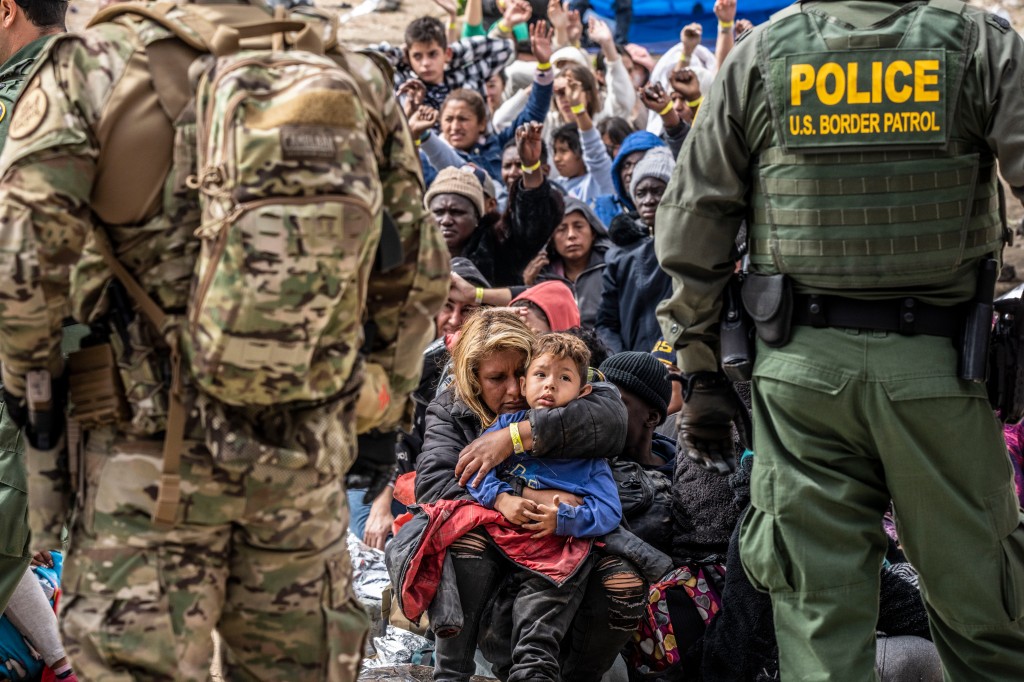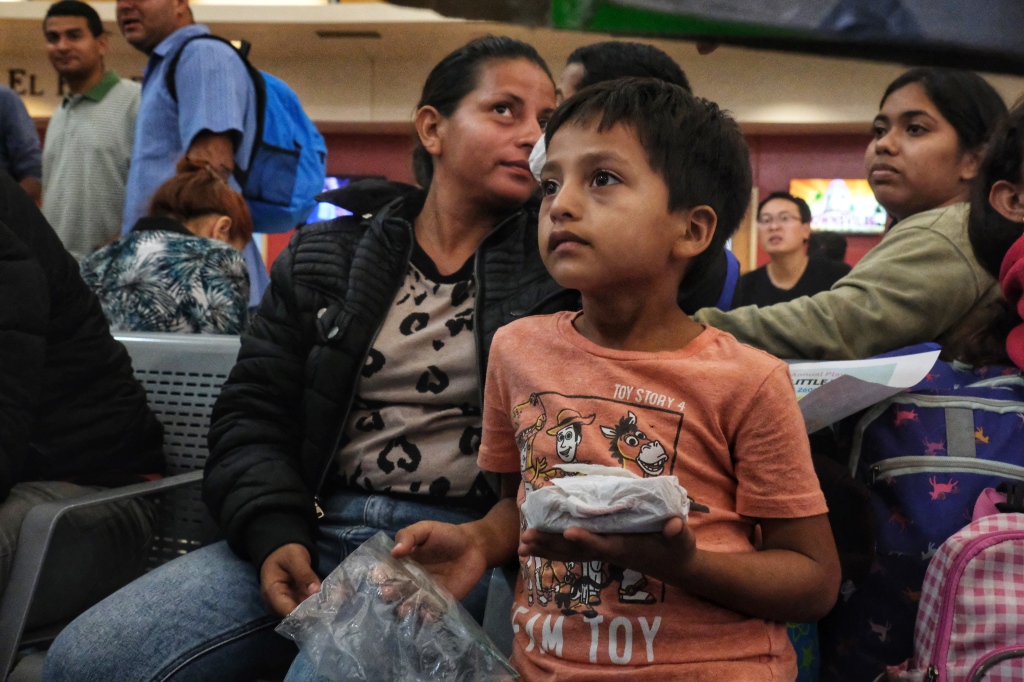Migrants admitted to US given 2035 immigration court dates
BROWNSVILLE, Texas — Migrants processed into the US as asylum seekers are being given immigration court dates more than a decade away.
In Brownsville, migrants who arrived in the US Thursday showed The Post their paperwork with designated court dates set as late as 2032 and 2035 in Chicago and Florida.
Now they have been admitted to the county and given a court date, the migrants can receive a work permit and legally live and work in the US until their case comes up.
Others who had immigration court hearings set for August 2023 in a Maryland immigration court and March 2027 at a Dallas immigration court.
Two people heading to New York City had dates listed for 2025.
Backlogs at immigration courts currently stand at 2.1 million cases waiting to be heard.
There are around 600 immigration court judges deciding asylum cases, and in the last financial year, they closed approximately 312,000 cases.
According to data from the Justice Department, 2022 saw the highest number of asylum applications on record, with almost 700,000 filed.
That record could be broken this year, with projections based on first-quarter figures to be almost 740,000 applications filed.
In the run-up to the end of Title 42, US Customs and Border Protection has apprehended more than 10,000 migrants each day since Sunday — the highest numbers in the agency’s recorded history.
US Immigration and Customs Enforcement (ICE) announced Wednesday it would also be allowing the heads of some “family units” apprehended at the southwest border to be outfitted with GPS ankle monitors.
They will be subject to curfews instead of being held in custody.
Officials have warned they expect up to 13,000 migrants to attempt to enter the country each day after Title 42’s end.
What is Title 42 and what does its end mean for US border immigration?
What is Title 42?
Title 42 is a federal health measure enforced by the US Border Patrol. It allows the agency to kick certain migrants out of the US and return them to Mexico. This includes asylum seekers, who under international law have the legal right to make an asylum claim in America.
Currently, migrants who cross the border illegally and who are from Cuba, El Salvador, Guatemala, Haiti, Honduras, Mexico, Nicaragua or Venezuela are subject to Title 42 and could be sent to Mexico.
How did Title 42 start?
President Donald Trump invoked the law in 2020 at the beginning of the COVID-19 pandemic, asking the Centers for Disease Control and Prevention to issue the policy. The Trump administration made the case that keeping migrants out of the country would slow down the spread of infections and maintain the safety of federal agents encountering migrants.
What has happened with Title 42 under Biden?
When President Biden took over, he continued to enforce Title 42 with one important change from his predecessor. Biden said Border Patrol agents were only allowed to expel migrants from certain countries under his direction. That meant migrants seeking asylum from countries like Cuba and Venezuela could still seek asylum if they arrived at the border and stay in the US while their cases were decided in court — unless they had a criminal record.
What is happening with Title 42 now?
Title 42 is supposed to be a health policy, not an immigration law. It will end at 11:59 p.m. May 11, when the Biden administration ends all COVID-19-related policies.
Why is it controversial?
Many have called for the policy’s end, saying it’s illegal and that international law guarantees people the right to seek asylum.
Others, like Texas Gov. Greg Abbott, warn that the southern border could see up to 13,000 migrants per day crossing with the intention to stay in the country when the measure ends.
What would the end of Title 42 mean for immigration into the US?
It’s unclear exactly how many people have been expelled under Title 42 because there have been scores of people who have attempted to enter the country numerous times and been rejected again and again, but the US Border Patrol said it made an all-time high of more than 2.3 million arrests at the border in the last fiscal year. Forty percent of people who were expelled from the country were ejected under the rules of Title 42.
READ MORE
Staggering images from the US-Mexico border show men, women and children trying to illegally enter the country, or gathering on near border crossings awaiting Title 42’s expiration.
Meanwhile, CBP Chief Raul Ortiz reportedly ordered large numbers of them to be released into the US without immigration court dates as a way of coping with the overwhelming number of migrants held at detention facilities.
According to data obtained by The Post, up to 16,000 migrants were waiting to cross into San Diego from Tijuana at the beginning of this week, while as many as 35,000 were waiting in Mexico’s Ciudad Juarez to cross into El Paso.
The Texas cities of Brownsville, El Paso and Laredo have declared states of emergency over the border crisis.

Title 42 is a pandemic-era measure that allowed the Border Patrol to swiftly eject migrants from certain countries without hearing their asylum claims, citing public health reasons.
The federal policy was enacted in 2020 under then-President Donald Trump and is among those being lifted by his successor.
From Friday, migrants will be processed under Title 8, a rule which involves longer processing times but includes penalties that were not options under Title 42, including deportation.
The administration has said it will also place hard penalties on anyone who enters the US without first filling in the required paperwork and getting an appointment to claim asylum.

The administration has also announced plans to establish 100 migration hubs throughout the Western Hemisphere, two of which will be located in Guatemala and Colombia.
Meanwhile, approximately 24,000 law enforcement officers have been stationed along the US-Mexico border, in addition to the deployment of 1,500 active-duty troops and 2,500 National Guard members to lend logistical support.
Speaking during a press conference Thursday, United States Secretary of Homeland Security Alejandro Mayorkas warned anyone who showed up at the southern border after midnight “will be presumed ineligible for asylum.”
He also said there will be “steeper consequences for unlawful entry, including a minimum five-year ban on re-entry and potential criminal prosecution,” he went on.
Mayorkas added: “I want to be very clear: our borders are not open. People who cross our border unlawfully and without a legal basis to remain will be promptly processed and removed.”
Read the full article Here


